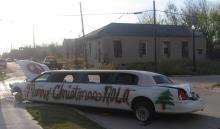Loyola Cancels Education Program
Without teachers, education in city will decline
By: Evan Clary
Posted: 4/21/06
Though I am not intimately familiar with the educational theory of the Jesuits, I have learned enough about it at Loyola University to understand that the Society of Jesus has historically valued education highly. Originally, the Jesuit educational mission had at its center the spiritual instruction of future Jesuits, but even the most cursory reading of the order's history shows a long-standing and serious - not to say zealous - commitment to promulgating social justice through the education of future educators, secular and spiritual alike.As such, I find it difficult to understand how Loyola's president and Strategic Task Force see the elimination of the undergraduate and graduate programs in education as commensurate with the university's mission and history.
In his introduction to the Pathways report, the president audaciously includes the mission statement, which states that Loyola seeks to attract "students of diverse backgrounds and prepares them to lead meaningful lives with and for others, to pursue truth, wisdom and virtue, and to work for a more just world."
I wonder: How do Father Wildes and the Strategic Task Force expect to fulfill this lofty purpose without educating future teachers, idealistic students for whom the institutional mission of Loyola routinely amounts to a personal credo? Something's out of joint.
But one need not examine the philosophical implications of the task force's plan to see that eliminating education programs at the university is foolhardy. Every day that I come to Loyola for class, I pass the ghostly shells of at least three public schools. I imagine the students that formerly populated them, waiting in countless elsewheres for reopenings, so that they and their families can return. And the return has begun. But I read enough in the newspapers to realize that despite Governor Blanco's placing the attraction of new teachers to New Orleans at the top of her agenda, the educational milieu here is fragile, uncertain and mired in controversy - not exactly the kind of situation veteran teachers with families and mortgages are likely to find attractive.
My anecdotal experience suggests that the young people coming now - or returning - to New Orleans possess the finest, most laudable ideals. They are outraged, sympathetic or both, but mostly they are here to help. When the schools do reopen, administrators would do well to recruit faculty from this ambitious, intelligent and energetic set. But aspiring teachers will need, in order to address our unique crisis, local training - the kind of involved teacher education the president and task force propose to eliminate. Without the personal and humane educational experience our university has offered uniquely (in the city), would-be teachers will be denied an important option.
Like everyone else who lived in and loved New Orleans before the coming of the storm, I understand that Hurricane Katrina has destroyed far more than our houses and streets. Our infrastructure and fiscal state are precipitously endangered and difficult decisions must be made. Moreover, I understand that some programs here are less cost-effective than others. Had the task force bothered to articulate specific reasons for eliminating the education programs, I suppose I would have tried to understand. But I doubt I would have been convinced. Turning away aspiring teachers - and the faculty committed to educating them - is not only philosophically inconsistent and impragmatic: It's a rotten thing to do.
Evan Clary is a second-year secondary education masters candidate from New Orleans.

